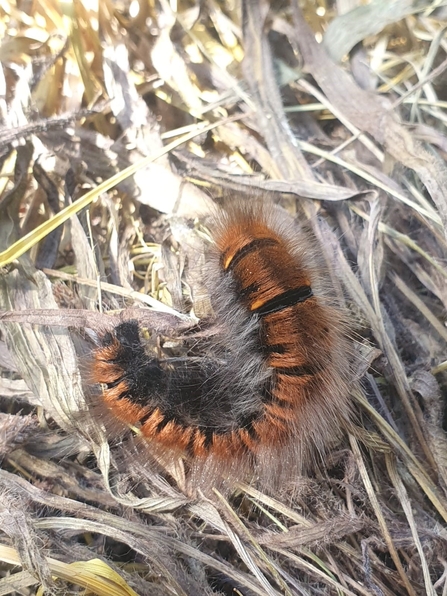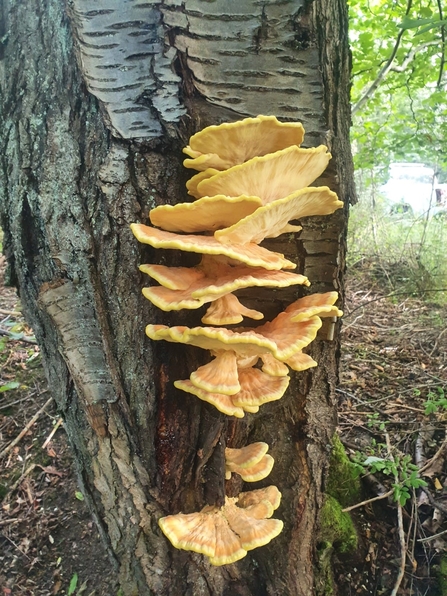Weekly wild news from our reserves, 18 September
By Steve Aylward
A fox moth caterpillar was spotted at Lackford Lakes by West Suffolk Reserves Warden, Joe Bell-Tye this week. This caterpillar can grow up to an amazing 70mm long. It is distinctive with a very hairy, dark brown body and has an orangey stripe extending down its length. During the very early development stages this caterpillar is dark brown with distinctive orangey/yellow bands. Look out for these caterpillars sunning themselves on paths and on top of low vegetation but don’t try to pick them up as their hairs act as a defence and can cause skin irritation if they are handled.

Fox caterpillar - Joe Bell-Tye
Will Cranstoun, West Suffolk Reserves Manger, is particularly fond of wild fungi. As autumn begins to show itself Will captures spectacular growths of mushroom and toadstool on his camera in what he says is his favourite time of the year. "The chicken of the woods is an easy-to-spot bracket fungus due to its distinctive sulphur-yellow colour; in fact, it is also called the 'Sulphur polypore'. It grows high up on the trunks of standing deciduous trees, such as oak, appearing as several thick, overlapping brackets. These are soft and spongy when young and exude a yellow liquid if squeezed. The upper surface is velvety and yellow-orange with a zoned margin, while the underside is yellow and covered with pores. The chicken of the woods gets its name from the texture of its flesh, which is said to resemble cooked chicken".

Chicken of the woods - Joe Bell-Tye
Hornet snacks on southern hawker dragonfly
This hornet was spotted tucking in to a southern hawker dragonfly at Church Farm nature reserve this week. Like other wasps, hornets can catch a very wide variety of invertebrates, mainly to feed to their larvae, and they have a very important role within ecosystems. They also feed on high energy foods such as nectar and sap.
Hornet eats southern hawker dragonfly at Church Farm (https://youtu.be/a4YEPKBawPE)
Hornet eats southern hawker dragonfly at Church Farm
Damaging Azolla water fern treated with weevils at Castle Marshes
These dykes at Castle Marshes had an infestation of the non-native water fern Azolla filiculoides, which spreads quickly forming thick mats across dykes and ponds. Azolla fern negatively affects the wetland by blocking out light and increasing nutrients, which in turn impacts upon rare aquatic plants, snails and fen raft spiders on the reserve. Our reserve wardens acted swiftly and introduced Azolla weevils who set to work and ate the Azolla fern, leaving a healthy dyke with green duck weed instead. The weevils usually die out naturally once they have consumed all the water fern, so eradicate the fern without the need for dredging or chemical treatment.




